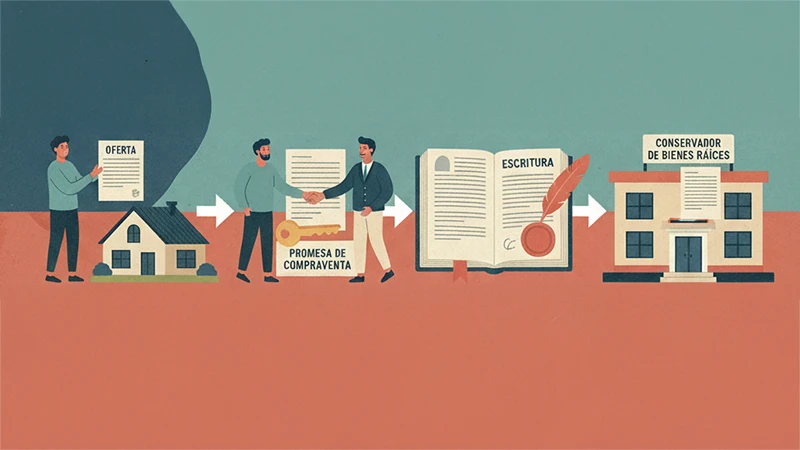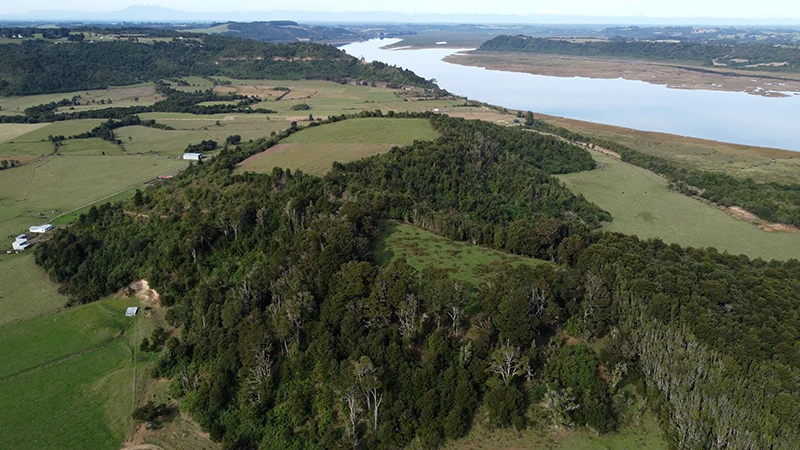Water management in Chile is a regulated and technical process that requires applicants to meet various requirements. If you are assessing applying for water rights, it is essential to understand how the procedure works, what legal restrictions apply and what kind of rights you could obtain. Here are the most important aspects:
How to make a formal consultation with the DGA?
Before applying for water rights, it is highly recommended to consult the General Water Directorate (DGA) to know if there is water availability in the area of your interest. This can be done formally through the Information and Citizen Care System (SIAC) under the Transparency Act (Act No. 20,285).
Steps for consultation:
- Enter the Transparency Portal:
- Entering the Comprehensive Citizen Information and Care System (SIAC):
- Select “Request for Information” and complete the form addressed to the General Water Directorate (DGA).
- Information to be included:
- Full name of applicant.
- Precise location of the property (commune, UTM coordinates or latitude / length).
- Short description of the objective of the consultation (e.g. “consultation on groundwater availability in the aquifer of [area name]”).
- Relevant attached files such as croquis, photographs and, if possible, a .KMZ or .KML file from Google Earth indicating the location of the property.
- Response time: the DGA must deliver a response within a maximum of 20 working days, which can be extended for an additional 10 days in special cases.
You can also request information directly from the regional DGA email:
The Lagos Region (Example):
– dgaloslakes @ mop.gov.cl
In the mail you must indicate:
- The target of your application.
- Location of the land of interest.
- Technical information available (if you have uprisings, croquis, or .kmz / .kml files).
Always remember to correctly identify your query and attach all available documentation to facilitate a precise response.
Other useful portals:
- Public Water Rights Viewer (to review existing rights):
https: / / visor.dga.cl / visor _ dga / - Official site DGA:
https: / / dga.mop.gob.cl /
Can a KMZ file be delivered from Google Earth?
Yeah, it’s highly recommended.
A .KMZ (or .KML) file facilitates the exact identification of the property to the DGA, allowing:
- Accelerate geospatial analysis.
- Minimize location errors.
- To be quickly integrated into the DGA geographic information systems (GIS).
Although not mandatory, it is a highly valued tool in the consultation and subsequent rights application processes.
Important legal restrictions on applying for water rights
When submitting an application for water rights, you must consider several legal restrictions:
Minimum distance between captures:
- It is usually necessary to respect 200 meters of minimum distance between wells to avoid hydraulic interference.
- This distance may vary if there is a technical study to justify it.
Prohibitions in protected areas:
- Rights that affect natural reserves, national parks, protected wetlands, among others, cannot be granted.
Respect for pre-existing rights:
- The new right cannot be detrimental to holders of previous rights.
Priority in water use:
- In the event of shortages, the use of subsistence (drinking water and sanitation) has priority over agricultural or industrial uses.
Common Hydraulic Utilization System (SHAC):
- In areas of overexploited aquifers or restricted areas, the DGA may require the use of a common well, rather than individual wells, to protect the aquifer.
What are the types of water rights that can be granted?
Water rights in Chile are classified according to the origin, type of use and system of exercise:
Depending on the origin of the water:
- Surface waters: Captured directly from rivers, lakes, mats, lagoons.
- Groundwater: extracted by deep wells or pumping systems.
Depending on the type of use:
- Conjunctive law: It allows the total consumption of the resource, without obligation of refund.
- Non-conjunctive right: It requires return of the resource to the same channel after use (used in hydroelectric power plants, for example).
Under the financial year scheme:
- Permanent and continuous: The right of constant recruitment throughout the year.
- Permanent and discontinuous: The right to periodic recruitment within the year.
- Event: It can only be captured if there are surpluses available after meeting permanent rights.
Of course! Here is a detailed article on the for non-use of water use rights in Chileincluding updated information and official sources:
Patent for Non-Use of Water Rights in Chile: Obligations, Penalties and Recent Changes
In Chile, existing legislation provides that water rights holders who do not fully or partially use their rights, or who have not built the works necessary for their use, must pay an annual patent for non-use. This measure aims to encourage the effective use of water resources and to avoid speculation.
What is the Patent for Non-Use?
The patent for non-use is a tribute to be paid by water rights holders who have not used their rights or have not built the works necessary for their use. It is regulated by the Water Code and aims to promote the efficient use of water resources.
Changes introduced by Act No. 21.435 (2022)
Law No. 21.435, published in April 2022, introduced important amendments to the water rights regime, including aspects related to the patent for non-use:
- Progressive increase in the amount of the patent: The value of the patent increases progressively every year the right is not used.
- Extinction of rights for non-use: If a right to use is not used for five consecutive years, it may be declared extinct by the General Water Directorate (DGA).
Cobro and Time Process
Each year, the DGA publishes in the Official Journal the list of rights affected by the payment of a patent for non-use. For the 2025 process, the publication was made on January 15, 2025.
- Deadline for appeal: The holders have a 30-day period from the publication to submit review appeals if they consider that their right was wrongly included.
- Deadline for payment: Payment of the patent must be made before 31 March 2025.
Consequences of Non-Payment
If the holder does not pay the patent within the prescribed time limit:
- Judicial aid: The Treasury of the Republic may initiate a judicial recovery process to recover the debt.
- Remuneration of the right: The right to use can be paid out publicly, and the amount collected is allocated to the State.
- Extinction of the right: If the right is not used for five consecutive years, the DGA may declare it extinguished.
Where and How to Pay?
The payment of the patent for non-use is made through the General Treasury of the Republic. You can access the online payment portal here: https: / / web.treasurea.cl / patentes-right-of-water-not-used /
Special Exemptions and Considerations
There are certain situations in which holders may be exempt from payment of the patent for non-use:
- Construction works: If it is shown that the works necessary for the use of the right are under construction, the exemption may be requested.
- Rights of indigenous communities: The case law has recognized that the water rights acquired by indigenous communities with funds from the Indigenous Law may be exempt from patent payment.
Recommendations
- Check the annual list: It is important to check each year whether your right to use is included in the DGA list.
- Use your right: If you are not using your right of water, consider doing so to avoid the payment of the patent and the possible extinction of the right.
- Legal advice: If you have doubts or consider that your right was wrongly included in the list, seek legal advice to present the corresponding remedies.
For more information and consultation, you can contact the General Directorate of Water through the Comprehensive Information and Citizen Care System (SIAC): https: / / siac.mop.gob.cl /
You can also review the list of rights to patent payment for non-use on the official DGA site: https: / / dga.mop.gob.cl /
Requesting water rights in Chile requires preparation, technical knowledge and a correct understanding of existing regulations.
A formal consultation of the DGA through the SIAC platform or the Transparency Portal, accompanied by appropriate information such as KMZ / KML files, is a strategic step that can save a lot of time and avoid errors.
Always remember to check local restrictions and consider whether it is mandatory to integrate into a SHAC in your area.
Access to water is a key right for production, life and development, but also a responsibility for the environment and future generations.
In Produncan Lands, our commitment is to keep you informed about all the current regulations related to the management of water rights and rural property in Chile. We know that these issues are complex and of great relevance to our customers, so we accompany you at every step, giving you clear, up-to-date information and from official sources, so that you make safe and sound decisions. If you have questions or need personalized advice, do not hesitate to contact us.

